clorofene
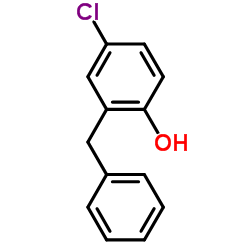
clorofene structure
|
Common Name | clorofene | ||
|---|---|---|---|---|
| CAS Number | 120-32-1 | Molecular Weight | 218.679 | |
| Density | 1.2±0.1 g/cm3 | Boiling Point | 339.6±27.0 °C at 760 mmHg | |
| Molecular Formula | C13H11ClO | Melting Point | 46-49 °C(lit.) | |
| MSDS | Chinese USA | Flash Point | 159.2±23.7 °C | |
| Symbol |



GHS05, GHS07, GHS09 |
Signal Word | Danger | |
Use of clorofeneClorophene is an antimicrobial and is found in hospitals and restaurants. |
| Name | Clorofene |
|---|---|
| Synonym | More Synonyms |
| Density | 1.2±0.1 g/cm3 |
|---|---|
| Boiling Point | 339.6±27.0 °C at 760 mmHg |
| Melting Point | 46-49 °C(lit.) |
| Molecular Formula | C13H11ClO |
| Molecular Weight | 218.679 |
| Flash Point | 159.2±23.7 °C |
| Exact Mass | 218.049850 |
| PSA | 20.23000 |
| LogP | 4.41 |
| Vapour Pressure | 0.0±0.8 mmHg at 25°C |
| Index of Refraction | 1.613 |
| Water Solubility | <0.1 g/100 mL at 16 ºC |
CHEMICAL IDENTIFICATION
HEALTH HAZARD DATAACUTE TOXICITY DATA
MUTATION DATA
|
| Symbol |



GHS05, GHS07, GHS09 |
|---|---|
| Signal Word | Danger |
| Hazard Statements | H302-H315-H318-H335-H410 |
| Precautionary Statements | P261-P273-P280-P305 + P351 + P338-P501 |
| Personal Protective Equipment | dust mask type N95 (US);Eyeshields;Gloves |
| Hazard Codes | Xn:Harmful;N:Dangerousfortheenvironment; |
| Risk Phrases | R22;R36/37/38;R41;R51/53 |
| Safety Phrases | 26-39-60-61-37/39 |
| RIDADR | UN 3077 9/PG 3 |
| WGK Germany | 2 |
| RTECS | GO7175000 |
| Packaging Group | III |
| HS Code | 29081000 |
| Precursor 9 | |
|---|---|
| DownStream 2 | |
| HS Code | 2908199090 |
|---|---|
| Summary | HS: 2908199090. derivatives of polyphenols or phenol-alcohols containing only halogen substituents and their salts. VAT:17.0%. tax rebate rate:9.0%. supervision conditions:None. MFN tariff:5.5%. general tariff:30.0% |
|
Identification of estrogenic compounds in fish bile using bioassay-directed fractionation.
Environ. Sci. Technol. 38(23) , 6415-23, (2004) Conjugates of estrogenic chemicals, endogenous as well as xenobiotic, are mainly excreted via bile into the intestine. Therefore, measurement of estrogenic activity in bile yields useful information a... |
|
|
Chronic nephropathy and renal carcinogenicity of o-benzyl-p-chlorophenol in F344/N rats and B6C3F1 mice.
Fundam. Appl. Toxicol. 27(2) , 252-62, (1995) o-Benzyl-p-chlorophenol, an aryl halide biocide, was evaluated in male and female F344/N rats and B6C3F1 mice in a series of subchronic and 2-year toxicity and carcinogenicity studies. Kidney was the ... |
|
|
Metabolism and disposition of ortho-benzyl-para-chlorophenol in male rats.
J. Toxicol. Environ. Health A 18(2) , 267-83, (1986) The metabolism and disposition of ortho-benzyl-para-chlorophenol (BCP) has been investigated in the male rat following an oral dose of 69 mg/kg or 206 mg/kg. BCP was rapidly eliminated at both dose le... |
| o-Benzyl-p-Chlorophenol |
| 5-Chloro-2-hydroxydiphenylmethane |
| Bio-Clave |
| Clorophene |
| clorofene |
| Phenol, 4-chloro-2-(phenylmethyl)- |
| Ketolin H |
| EINECS 204-385-8 |
| chlorophene |
| o-benzyl-4-chlorophenol |
| Santophen |
| Clorophen |
| o-Cresol, 4-chloro-α-phenyl- |
| CLOROFEN |
| 4-Chloro-α-phenyl-o-cresol |
| 4-Chloro-a-phenyl-o-cresol |
| MFCD00020140 |
| 2-Benzyl-4-chlorophenol |
| Phenol, 4-chloro-2- (phenylmethyl)- |
| 2-benzyl-4-chloro-phenol |
 CAS#:100-44-7
CAS#:100-44-7 CAS#:106-48-9
CAS#:106-48-9 CAS#:100-51-6
CAS#:100-51-6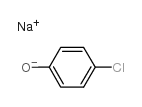 CAS#:1193-00-6
CAS#:1193-00-6 CAS#:497949-70-9
CAS#:497949-70-9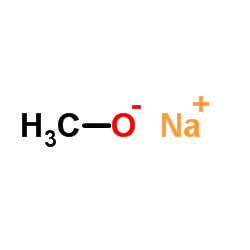 CAS#:124-41-4
CAS#:124-41-4 CAS#:538-86-3
CAS#:538-86-3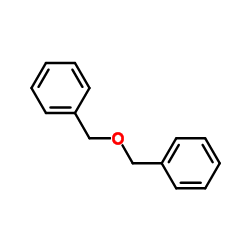 CAS#:103-50-4
CAS#:103-50-4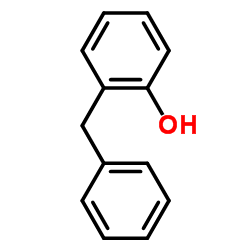 CAS#:28994-41-4
CAS#:28994-41-4 CAS#:19578-81-5
CAS#:19578-81-5
